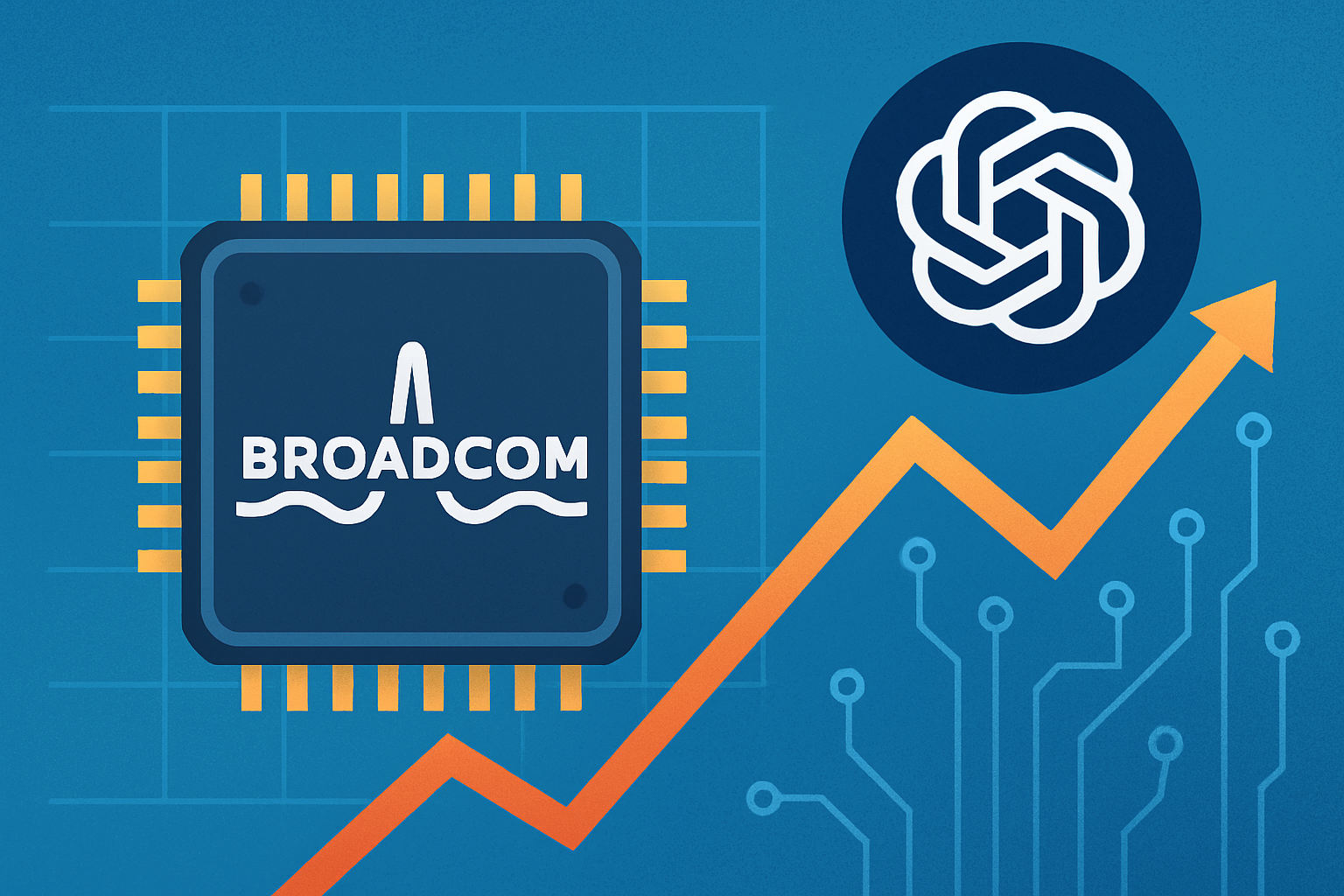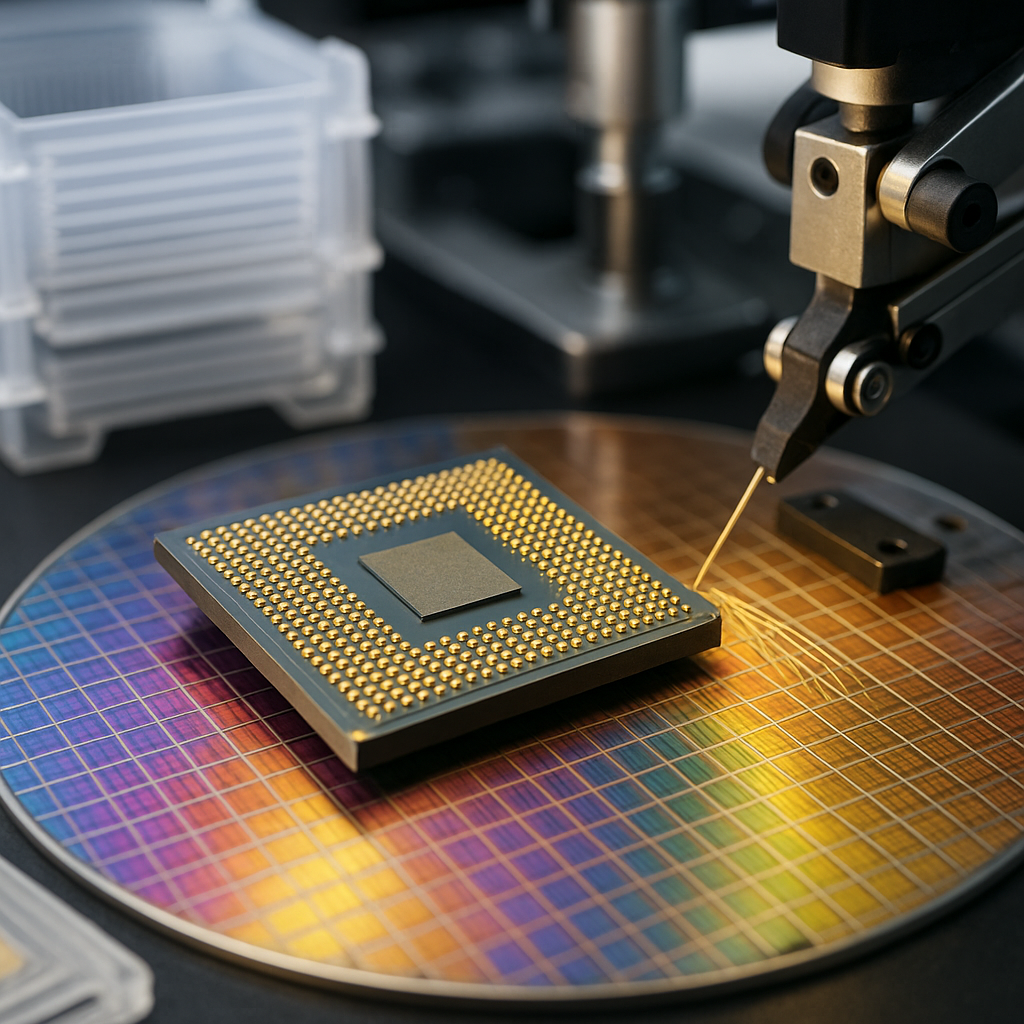Broadcom’s breakthrough partnership with OpenAI has set off a wave of investor optimism, underscoring the deepening race for AI infrastructure dominance. The multi-year agreement positions Broadcom as a new heavyweight in the high-stakes market for AI accelerators—traditionally led by Nvidia and AMD—and signals a structural shift in how the world’s most powerful AI systems are built and scaled.
A Power Move in the AI Infrastructure Race
Broadcom’s stock surged more than 9% on Monday after reports confirmed a multi-year deal with OpenAI to supply advanced AI accelerators and networking components capable of supporting up to 10 gigawatts (GW) of compute capacity by 2029. The announcement—first reported by Investor’s Business Daily and later corroborated by Reuters—marks one of the largest private compute infrastructure commitments in the emerging AI ecosystem.
The move instantly repositioned Broadcom as a serious contender in AI chipmaking, a space long dominated by Nvidia ($NVDA) and AMD ($AMD). The company’s accelerators will reportedly be used to power large-scale training clusters for OpenAI’s next-generation language models, potentially reducing its dependence on Nvidia’s GPU supply bottlenecks.
Investors reacted swiftly, sending Broadcom ($AVGO) to fresh record highs. The rally reflects a growing belief that the AI hardware market—estimated by Bloomberg Intelligence to surpass $400 billion by 2030—has room for more than one dominant player.
Why This Matters for Investors
Broadcom’s deal represents a fundamental broadening of the AI hardware ecosystem, one that could reshape capital allocation across the semiconductor landscape. Unlike Nvidia, which focuses on GPUs optimized for model training, Broadcom brings specialized networking, custom ASIC design, and semiconductor manufacturing partnerships to the table.
According to Morgan Stanley’s semiconductor analyst Joseph Moore, “This deal highlights how hyperscalers and AI developers are increasingly looking for diversified chip partners to manage costs and supply security. Broadcom’s ability to offer end-to-end integration—from networking to chip design—makes it a uniquely strategic supplier.”
The timing is significant. As AI demand surges, GPU shortages and power constraints have emerged as key chokepoints. OpenAI’s 10GW goal hints at the immense power requirements for next-gen models, with infrastructure needs rivaling those of mid-sized nations. Broadcom’s role in addressing these constraints could accelerate its revenue diversification beyond networking and broadband markets.
The Competitive Landscape: Shifting Power Dynamics
Nvidia’s dominance remains undisputed, but cracks in the monopoly are forming. Companies like Broadcom, Intel, and startups such as Cerebras and Groq are pursuing alternative architectures to challenge Nvidia’s CUDA ecosystem. Meanwhile, The Wall Street Journal recently reported that OpenAI and Microsoft ($MSFT) are exploring custom chip initiatives to reduce long-term dependency on Nvidia hardware—a development that underscores the strategic importance of Broadcom’s deal.
Broadcom’s entry comes as AI hardware becomes increasingly geopolitical. The U.S. government’s ongoing export restrictions on advanced chips to China have driven global chipmakers to align more closely with American AI firms, giving Broadcom a home-field advantage.
If executed effectively, Broadcom’s partnership with OpenAI could elevate its AI revenue share from low single digits to over 15% of total sales by 2028, according to Goldman Sachs estimates. Such a shift would realign its valuation narrative from a networking and enterprise chipmaker to an AI infrastructure leader—a transformation investors are eager to price in.
Future Trends to Watch
- AI Supply Chain Diversification: Major AI developers will continue spreading their chip sourcing across multiple vendors, reducing overreliance on Nvidia. Expect further strategic partnerships and M&A activity in this space.
- Custom Silicon Acceleration: Companies like Amazon (via AWS Inferentia) and Google (via TPU) have paved the way for custom silicon; OpenAI’s Broadcom partnership is the next step in this trend.
- Energy and Infrastructure Implications: Delivering 10GW of compute will require substantial power infrastructure investments, benefiting energy providers and data center REITs with AI exposure.
- Valuation Multiples and Earnings Growth: Broadcom’s AI narrative may justify higher forward P/E multiples, particularly as analysts begin modeling long-term AI-derived earnings.
Key Investment Insight
Broadcom’s strategic move into AI accelerators is more than a headline—it’s a signal of the sector’s evolving maturity. For investors, this deal presents a dual opportunity: exposure to the accelerating AI infrastructure cycle and a hedge against overconcentration in Nvidia-led assets.
Short-term volatility may persist as markets digest the scale of this expansion, but long-term positioning favors firms with deep integration capabilities across hardware, software, and networking layers. Investors should track how Broadcom manages execution risk, capital expenditure, and power efficiency as it scales alongside OpenAI.
Stay informed with MoneyNews.Today — your daily source for high-impact financial news, analysis, and investment insights driving global markets.





